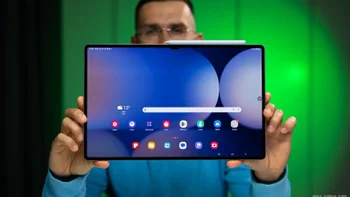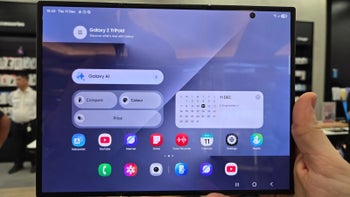Chips reaching their limits as smartphones progress

The semi-conductor business, for all its progress, is a balancing act. The industry, from AMD to Xilinx, advances their product lines and specifications at a blinding speed, sometimes exceeding the spirit of “Moore’s Law” which basically states, that the number of transistors on integrated circuits doubles about every two years. Certainly in some cases, we have seen this technology advance at an exponential rate. This law applies in the context of miniaturization as well.
Research and development of such technology incurs significant costs as well, leading to the idea of “Moore’s second law," which said that the cost of a semiconductor fabrication plant also increases exponentially over time.
The manufacturing process for these chip-sets is refined every time a new, more powerful, yet smaller chip design must be fabricated. Chip manufacturers often need to overcome some obstacles when designing a new fabricating a chip with more and more transistors on each wafer of silicon. The current photographic process that is currently used is not expected to be able to keep up with design demands in the coming years.
Manufacturers have been developing a new fabrication technique called extreme ultraviolet (EUV) lithography, but the process is not ready for mass production at the anticipated demands. Current lithography technology uses light to create the images needed to fabricate the patterns of circuitry. However, the features in these patterns are getting so small, normal wavelengths of light are larger than the desired definition (think of trying to draw a thin line with a fat-tip marker).
EUV provides that “fine-tip,” but its development has presented obstacles for the manufacturers. Using these rays of light must be done in a vacuum, using mirrors. Without getting too technical, it requires precision, and current production rates are about 30% of what is expected to be needed.
In case EUV does not pan out, another approach is being looked at. Called directed self assembly (DSA), this method uses chemical combinations to build the superfine patterns on the chip. This may also assist in arresting the manufacturing costs in the future which one would hope means less expensive cost to build the final devices. As it is, it looks like a lot of companies are betting on EUV. High volume output with these new methods should be achieved sometime in 2014.
What does this mean for smartphones? As manufacturers of these devices create leaner designs, with more features built in, they demand smaller integrated circuits with more processing power. So, in a few years when you are eyeing that snazzy new 8-core, super-speed MHz device, you may have just a bit of appreciation for the microscopic work that went into the brain of that beast.
The manufacturing process for these chip-sets is refined every time a new, more powerful, yet smaller chip design must be fabricated. Chip manufacturers often need to overcome some obstacles when designing a new fabricating a chip with more and more transistors on each wafer of silicon. The current photographic process that is currently used is not expected to be able to keep up with design demands in the coming years.
EUV provides that “fine-tip,” but its development has presented obstacles for the manufacturers. Using these rays of light must be done in a vacuum, using mirrors. Without getting too technical, it requires precision, and current production rates are about 30% of what is expected to be needed.
What does this mean for smartphones? As manufacturers of these devices create leaner designs, with more features built in, they demand smaller integrated circuits with more processing power. So, in a few years when you are eyeing that snazzy new 8-core, super-speed MHz device, you may have just a bit of appreciation for the microscopic work that went into the brain of that beast.
source: Wall Street Journal
Follow us on Google News











Things that are NOT allowed:
To help keep our community safe and free from spam, we apply temporary limits to newly created accounts: